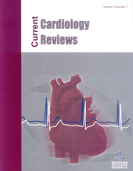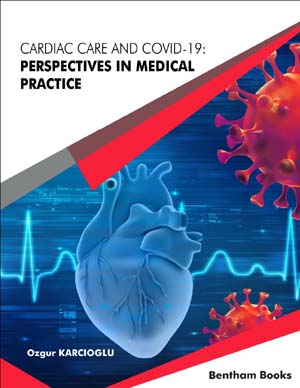Abstract
Oxidative stress is one of the main mechanisms involved in the pathophysiology of arterial hypertension, inducing direct effects on the vasculature, and contributing to endothelial dysfunction and consequent impairment of vascular relaxation. Despite a large number of pharmacological treatments available, intolerable side effects are reported, which makes the use of natural antioxidants a promising and complementary alternative for the prevention and treatment of hypertension. From this perspective, the current review aims to investigate and characterize the main antioxidants of natural origin for the treatment of hypertension. Antioxidants act in the inhibition or extinction of chemical reactions involving free radicals and consequently reduce the occurrence of damage caused by these cellular components. The main natural antioxidants for treating hypertension include caffeic acid, ferulic acid, curcumin, apocynin, quercetin, lipoic acid, and lycopene. The effects associated with these antioxidants, which make them therapeutic targets for decreasing high blood pressure, include increased activation of antioxidant enzymes, stimulation of nitric oxide bioavailability, and reduction in angiotensin-converting enzyme activity, arginase, and NADPH oxidase, whose effects contribute to reducing oxidative stress, improving endothelial function, and preventing cardiovascular dysfunctions. Thus, several products with antioxidant properties that are available in nature and their application in the treatment of hypertension are described in the literature. The therapeutic effects of these products seem to regulate several parameters related to arterial hypertension, in addition to combating and preventing the deleterious effects related to the disease.
Keywords: Hypertension, oxidative stress, phenolic compounds, caffeic acid, carotenoids, curcumin, apocynin, lipoic acid.
[http://dx.doi.org/10.1016/j.cjca.2012.01.017] [PMID: 22445098]
[http://dx.doi.org/10.3390/ijms18091988] [PMID: 28914782]
[http://dx.doi.org/10.1253/circj.CJ-10-0153] [PMID: 20424336]
[http://dx.doi.org/10.1080/10715762.2017.1322205] [PMID: 28427291]
[http://dx.doi.org/10.1159/000111170] [PMID: 18025823]
[http://dx.doi.org/10.1097/01.mnh.0000168334.09454.1c] [PMID: 16046899]
[http://dx.doi.org/10.3390/molecules25235676] [PMID: 33271992]
[http://dx.doi.org/10.1016/j.cca.2014.06.004] [PMID: 24933428]
[http://dx.doi.org/10.1159/000086411] [PMID: 15956781]
[http://dx.doi.org/10.1007/s11906-010-0100-z] [PMID: 20424957]
[PMID: 14726604]
[http://dx.doi.org/10.3390/antiox9090864] [PMID: 32937950]
[http://dx.doi.org/10.1007/s00418-004-0696-7] [PMID: 15338229]
[http://dx.doi.org/10.1161/01.HYP.0000142232.29764.a7] [PMID: 15337734]
[http://dx.doi.org/10.1089/ars.2019.7915] [PMID: 31826639]
[http://dx.doi.org/10.1038/hr.2011.39] [PMID: 21512515]
[http://dx.doi.org/10.1016/j.lfs.2016.11.005] [PMID: 27838210]
[http://dx.doi.org/10.1016/j.vph.2018.10.002] [PMID: 30339939]
[http://dx.doi.org/10.1016/S0168-8227(01)00337-0]
[http://dx.doi.org/10.1016/j.cjca.2015.02.008] [PMID: 25936489]
[http://dx.doi.org/10.2174/1381612043384619] [PMID: 15134566]
[http://dx.doi.org/10.1038/sj.jhh.1001945] [PMID: 16341053]
[http://dx.doi.org/10.7860/JCDR/2013/5829.3091] [PMID: 23905086]
[http://dx.doi.org/10.1016/j.freeradbiomed.2010.04.016] [PMID: 20416370]
[http://dx.doi.org/10.3390/ijms18010096] [PMID: 28067795]
[http://dx.doi.org/10.1016/j.ejmech.2019.06.010] [PMID: 31228811]
[http://dx.doi.org/10.1016/j.vph.2019.03.004] [PMID: 30946986]
[http://dx.doi.org/10.1291/hypres.30.1159] [PMID: 18344620]
[http://dx.doi.org/10.1161/CIRCULATIONAHA.107.718585] [PMID: 18427144]
[http://dx.doi.org/10.3390/ph3010237] [PMID: 27713250]
[http://dx.doi.org/10.1007/978-3-319-63245-2_10] [PMID: 29047086]
[http://dx.doi.org/10.1097/01.hjh.0000358835.25934.5e] [PMID: 19633449]
[http://dx.doi.org/10.1016/j.numecd.2011.01.009]
[http://dx.doi.org/10.1016/S0140-6736(02)98858-6] [PMID: 12076551]
[http://dx.doi.org/10.1016/S0895-7061(99)00284-8] [PMID: 10981543]
[http://dx.doi.org/10.3389/fnut.2019.00121] [PMID: 31448280]
[http://dx.doi.org/10.1159/000491755] [PMID: 30235459]
[http://dx.doi.org/10.1097/FJC.0b013e31827cb600] [PMID: 23188120]
[http://dx.doi.org/10.1016/S0895-7061(01)02337-8] [PMID: 11991222]
[http://dx.doi.org/10.3390/nu10060713] [PMID: 29865227]
[http://dx.doi.org/10.1016/j.fct.2010.05.063] [PMID: 20573577]
[http://dx.doi.org/10.3390/molecules21091219] [PMID: 27649133]
[http://dx.doi.org/10.1016/j.intimp.2015.07.037] [PMID: 26330101]
[http://dx.doi.org/10.1016/j.krcp.2012.09.001] [PMID: 26889426]
[http://dx.doi.org/10.1093/ajh/hpu123] [PMID: 25023205]
[http://dx.doi.org/10.2174/0929867053363397] [PMID: 15638738]
[http://dx.doi.org/10.1016/j.tice.2019.07.006] [PMID: 31582013]
[http://dx.doi.org/10.1016/j.ijpharm.2010.09.035] [PMID: 20933071]
[http://dx.doi.org/10.1093/jn/133.6.1853] [PMID: 12771329]
[http://dx.doi.org/10.1016/j.tox.2005.09.011] [PMID: 16243424]
[http://dx.doi.org/10.1016/j.cbi.2020.109269] [PMID: 32991861]
[http://dx.doi.org/10.1291/hypres.28.369] [PMID: 16138568]
[http://dx.doi.org/10.1016/j.ejphar.2014.02.038] [PMID: 24631256]
[http://dx.doi.org/10.1111/jfbc.13384] [PMID: 32725646]
[http://dx.doi.org/10.1016/j.biopha.2018.10.044] [PMID: 30399581]
[http://dx.doi.org/10.1016/j.jams.2015.03.003] [PMID: 27079229]
[PMID: 9892142]
[http://dx.doi.org/10.1080/13880209.2020.1764060] [PMID: 32432949]
[http://dx.doi.org/10.3390/molecules24162930] [PMID: 31412624]
[http://dx.doi.org/10.1080/17460441.2019.1614560] [PMID: 31094233]
[http://dx.doi.org/10.3390/molecules23040835] [PMID: 29621160]
[http://dx.doi.org/10.3390/nu12103179] [PMID: 33080891]
[PMID: 34331686]
[http://dx.doi.org/10.1007/s00210-011-0624-z] [PMID: 21448566]
[http://dx.doi.org/10.1186/1743-7075-8-72] [PMID: 22005253]
[http://dx.doi.org/10.1016/0378-5173(90)90201-E]
[http://dx.doi.org/10.3797/scipharm.ISP.2015.05] [PMID: 27110504]
[http://dx.doi.org/10.1111/jphp.12611] [PMID: 27747859]
[http://dx.doi.org/10.1016/j.niox.2014.09.001]
[http://dx.doi.org/10.1016/j.taap.2021.115701] [PMID: 34453990]
[http://dx.doi.org/10.1016/j.jnutbio.2019.07.003] [PMID: 31473513]
[http://dx.doi.org/10.1620/tjem.253.69] [PMID: 33473064]
[http://dx.doi.org/10.18632/aging.101149] [PMID: 28070018]
[http://dx.doi.org/10.3390/nu13082608] [PMID: 34444769]
[http://dx.doi.org/10.1016/j.toxlet.2015.10.019] [PMID: 26518973]
[http://dx.doi.org/10.1038/srep25579] [PMID: 27146402]
[http://dx.doi.org/10.1038/sj.jhh.1001434] [PMID: 12140723]
[http://dx.doi.org/10.1080/08037050152518302] [PMID: 11683476]
[http://dx.doi.org/10.1016/j.vph.2016.08.006] [PMID: 27569106]
[http://dx.doi.org/10.3390/antiox10081163] [PMID: 34439411]
[http://dx.doi.org/10.1080/03602532.2021.1895203] [PMID: 33689526]
[http://dx.doi.org/10.1080/10641960701500398] [PMID: 17653964]
[http://dx.doi.org/10.1002/prp2.635] [PMID: 32761799]
[http://dx.doi.org/10.1016/j.amjhyper.2005.09.023] [PMID: 16580579]
[http://dx.doi.org/10.3109/10715762.2011.639069] [PMID: 22070348]
[http://dx.doi.org/10.1016/j.vph.2016.06.005] [PMID: 27353052]
[http://dx.doi.org/10.1038/ajh.2009.186] [PMID: 19779472]
[http://dx.doi.org/10.1038/aps.2012.164] [PMID: 23334241]
[http://dx.doi.org/10.1007/s12012-013-9216-0] [PMID: 23703608]
[http://dx.doi.org/10.4103/0253-7613.58508] [PMID: 20177490]
[http://dx.doi.org/10.1097/00004872-200209000-00031] [PMID: 12195128]
[http://dx.doi.org/10.1055/s-2003-45144] [PMID: 14735435]
[http://dx.doi.org/10.1002/mnfr.201700447] [PMID: 29127724]
[http://dx.doi.org/10.1161/JAHA.115.002713] [PMID: 27405810]
[http://dx.doi.org/10.1097/FJC.0b013e318162011f] [PMID: 18356687]
[http://dx.doi.org/10.1007/s11010-005-4503-0] [PMID: 15792364]
[http://dx.doi.org/10.1038/sj.bjp.0704064] [PMID: 11325801]
[http://dx.doi.org/10.1097/MNH.0b013e32832923c3] [PMID: 19430333]
[http://dx.doi.org/10.1007/s00210-010-0546-1] [PMID: 20694791]
[http://dx.doi.org/10.1016/j.krcp.2015.12.003] [PMID: 27069853]
[http://dx.doi.org/10.1096/fasebj.6.3.1346768] [PMID: 1346768]
[http://dx.doi.org/10.1016/j.atherosclerosis.2018.01.031] [PMID: 29425960]
[http://dx.doi.org/10.1017/S000711451300278X] [PMID: 23953879]
[http://dx.doi.org/10.1016/j.ejmech.2018.06.053] [PMID: 29966915]
[http://dx.doi.org/10.1139/apnm-2013-0091] [PMID: 24053516]
[http://dx.doi.org/10.3390/molecules171112997] [PMID: 23117438]
[http://dx.doi.org/10.3390/antiox9101011] [PMID: 33086555]
[http://dx.doi.org/10.1093/jn/133.11.3327] [PMID: 14608040]
[http://dx.doi.org/10.1016/j.bbagen.2009.07.026] [PMID: 19664690]
[http://dx.doi.org/10.2174/187153008784534303]
[http://dx.doi.org/10.1002/biof.5520060303] [PMID: 9288403]
[http://dx.doi.org/10.5152/akd.2014.5483] [PMID: 25430409]
[http://dx.doi.org/10.1111/j.1365-2362.2009.02236.x] [PMID: 20050880]
[http://dx.doi.org/10.1038/hr.2011.208] [PMID: 22170390]
[http://dx.doi.org/10.3892/ijmm.2016.2846] [PMID: 28035366]
[http://dx.doi.org/10.3390/molecules171113357] [PMID: 23143148]
[http://dx.doi.org/10.1038/ajh.2011.196] [PMID: 22052076]
[http://dx.doi.org/10.1007/s11010-005-1095-7] [PMID: 16335793]
[http://dx.doi.org/10.1097/01.hjh.0000222766.37971.9f] [PMID: 16612258]
[http://dx.doi.org/10.3390/antiox10071006] [PMID: 34201726]
[http://dx.doi.org/10.1155/2013/517045]
[http://dx.doi.org/10.3109/10641963.2015.1047950] [PMID: 26207883]
[http://dx.doi.org/10.3945/an.114.005231] [PMID: 25469376]
[http://dx.doi.org/10.3389/fphar.2018.00521] [PMID: 29875663]
[http://dx.doi.org/10.1016/j.atherosclerosis.2010.11.036] [PMID: 21194693]
[http://dx.doi.org/10.1007/s10557-008-6155-2] [PMID: 19052855]
[http://dx.doi.org/10.1177/1470320316664611] [PMID: 27678388]
[http://dx.doi.org/10.1016/j.jff.2018.06.002]
[http://dx.doi.org/10.1016/j.jnutbio.2019.01.002] [PMID: 30772766]
[http://dx.doi.org/10.1016/j.jff.2021.104656]





















